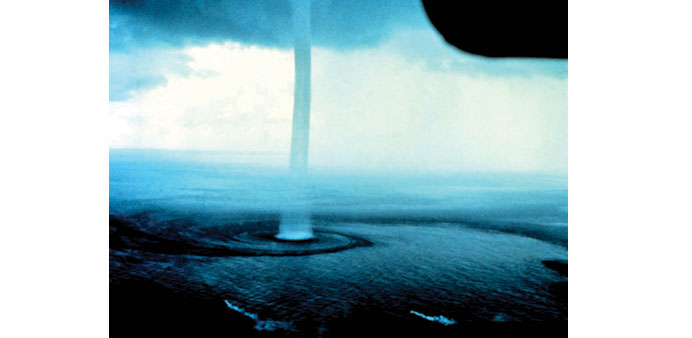By Steff Gaulter
Worms have been upsetting the skiers in Norway; they’ve been falling out the sky and ruining the snow.
Actually to be honest, I think that most of the skiers wouldn’t have noticed as the worms were quite skinny and small, but one of them was a biology teacher and they’re always rather observant. Seeing thousands of worms wriggling on the surface of the snow confused him as the snow was about a metre deep and the worms were only six centimetres long; if they’re wriggled up from the surface of the mountain then they should have frozen. The only explanation is that they fell from the sky.
It may seem far-fetched at first that worms would have rained from the sky, but it’s not actually quite as surprising as you might think. Tales of animals raining from the skies have been told throughout history. The Roman natural philosopher, Pliny the Elder, wrote about storms of fish and frogs in the first century AD.
People used to be very sceptical of these tales, but in the new digital age, where everyone with a mobile phone is also an amateur cameraman, there’s simply too much evidence. It was only a year ago that video emerged from Sri Lanka of another creature rain, but in this instance it was not worms but fish which fell from the sky.
The video taken at the beginning of May last year in the district of Chilaw, to the north of Colombo, shows people collecting the little fish in buckets. The video also proves that some of the little creatures were alive when they came out of the sky; when water was added to the buckets, the fish swam around, gasping for breath.
These instances of animal rain aren’t as rare as you might think: in 2012, prawns rained down on Sri Lanka; in May 1981, frogs were seen falling from the sky in Greece; and back in 1881, hermit crabs pounded the city of Worcester in the UK.
Before you start to worry that a giant squid or a whale is about to fall out of the sky in the next shower, I would like to point out that everything that I have heard of that has rained out of the sky has been fairly light. However, how it gets into the atmosphere in the first place is still somewhat of a mystery.
The strange thing is that no one has ever seen animals get sucked up into the air, they’ve only ever been seen falling from the sky. How they get into the atmosphere is therefore assumed rather than decisively known. The assumption is that a tornado must move across a coastal region or a river, and suck the sea life out of the water. This tornado, called a waterspout when it is over the water, is believed to be able to suck up the enormous quantities of water and sea creatures could be included in that too.
This might explain the falling fish in Sri Lanka and the crabs in the UK, but the worms in Norway were earthworms, so they certainly wouldn’t have been mixed up in sea water. However, over the past few weeks, the temperature in much of Norway has been above average. This has enticed the earthworms to the surface, and being tiny creatures, a large gust of wind could easily send them airborne.
On this occasion though, it seems as though it was more than just one gust of wind, as the ski fields of Norway weren’t the only part of the country which saw the wriggling rain. There has been a flurry of other reported worm sightings from many places in southern Norway. In fact, there have been reports of worms raining from skies above Norway dating back to the 1920s.
Why Norway is particularly susceptible to worms raining from the heavens is unclear, but it’s not a phenomenon that’s exclusively Norwegian. Worm rain has also been spotted falling from the sky in southern Scotland. Students in Galashiels Academy, Selkirkshire had to take cover during a football match after worms started to fall onto the pitch. In this case there is no question of whether the worms crawled out of the earth, as the pitch was made of astroturf.
If the idea of worms falling out of the sky gives you the heebie jeebies, then spare a thought for the residents of Acapulco, Mexico. On October 5, 1967 mixed into a torrential downpour was a collacine (thank you Google!) of maggots, which fell to the ground still alive. That would definitely be a good time to use an umbrella!
However, the most mystifying that I’ve heard of occurred in the Australia town of Lajamanu. The town is about half way between Darwin and Alice Springs, in the Tanami Desert. Despite its arid location, fish fell across the town on not one but two consecutive days in February 2010. What makes this even more remarkable is the fact that residents of the town, which is 525km (325 miles) from the nearest river, had already reported seeing fish raining on their house in 2004 and 1974. Despite its distance from water, Lajamanu is clearly a very fishy place!

POSSIBLE EXPLANATION: File photo of a waterspout near Florida. Waterspouts, it is believed, can account for at least some instances of fishes and oth


